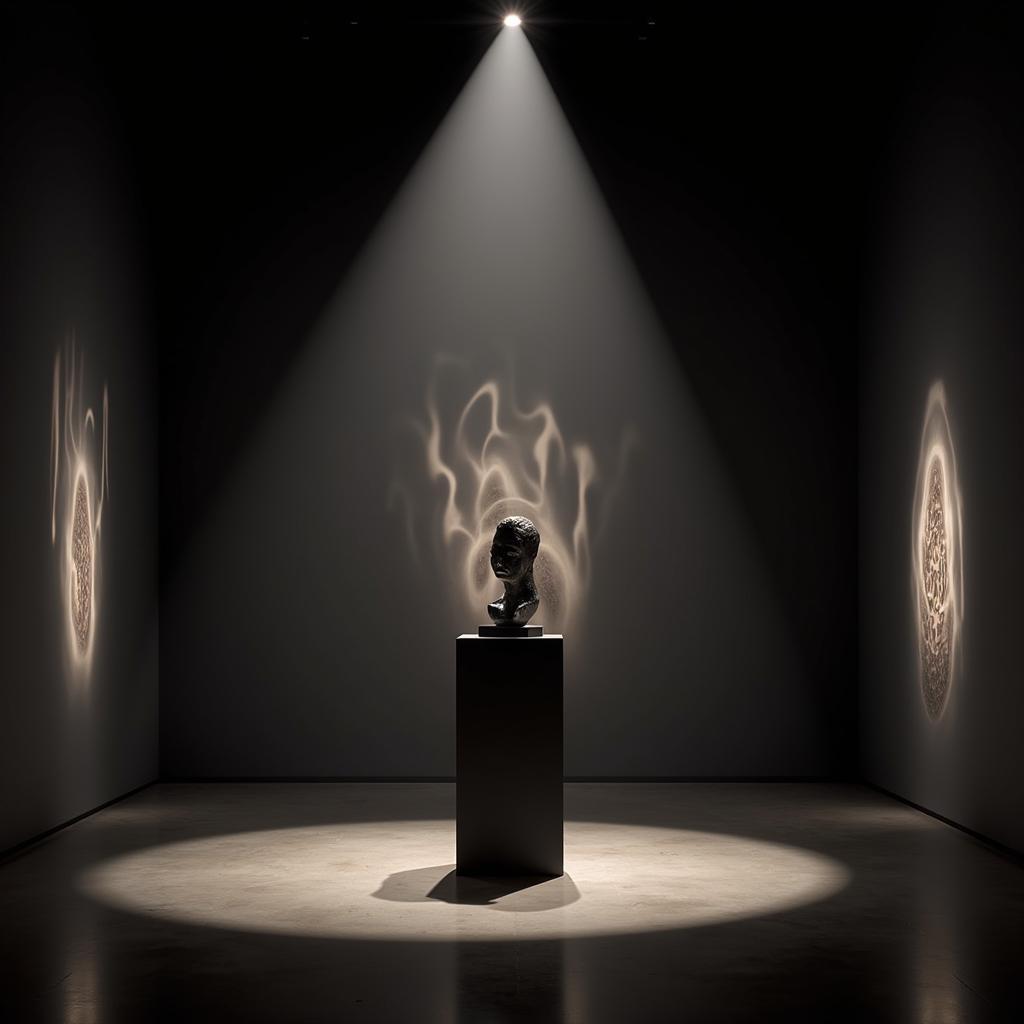Mastering Art Gallery Lighting: A Guide to Illuminate Your Artwork
Art Gallery Lighting is a crucial aspect of showcasing artwork effectively. It involves a delicate balance of illuminating the pieces while preserving their integrity and enhancing the viewer’s experience. Whether you’re a gallery owner, an artist, or simply an art enthusiast, understanding the nuances of art gallery lighting is essential.
One of the first things to consider is the type of artwork you want to illuminate. For example, moonlight art print with its subtle shades and contrasts will require a different lighting approach compared to vibrant office canvas art. The goal is always to highlight the artwork’s unique qualities and evoke the desired emotional response from the observer.
Types of Art Gallery Lighting
Different lighting techniques serve specific purposes in an art gallery setting. Let’s explore some of the most common types:
1. Ambient Lighting
This type of lighting provides overall illumination for the space, setting the mood and allowing visitors to navigate comfortably. Soft, diffused light sources like wall-mounted fixtures or recessed ceiling lights work best for ambient lighting.
2. Accent Lighting
As the name suggests, accent lighting is used to highlight specific artworks or areas within the gallery. This technique involves directing focused beams of light onto the pieces, creating contrast and drawing the viewer’s attention. Track lighting systems with adjustable spotlights are a popular choice for accent lighting.
3. Task Lighting
Task lighting is crucial for areas where detailed viewing or work is required. For instance, in a gallery’s restoration area, adjustable lamps with high color rendering index (CRI) bulbs ensure accurate color perception for art handlers and conservators.
Factors to Consider for Art Gallery Lighting
1. Color Temperature
Measured in Kelvin (K), color temperature significantly impacts the mood and perception of artwork. Warmer light (around 2700K) creates a cozy and inviting atmosphere, while cooler light (around 4000K) offers a more modern and vibrant feel.
2. Color Rendering Index (CRI)
CRI indicates how accurately a light source renders colors compared to natural light. A high CRI (above 90) is crucial for art galleries to ensure the artwork’s colors appear true to life.
3. Light Intensity
The intensity of light, measured in lumens, should be carefully considered. Too much light can cause glare and damage sensitive artworks, while too little light can make the pieces appear dull and lifeless.
4. Light Direction
The direction from which light falls on the artwork can dramatically affect its appearance. Experimenting with different angles can enhance textures, minimize reflections, and create dramatic effects.
Conservation and Preservation
When it comes to preserving valuable artwork, choosing the right light sources is paramount.
“The longevity of an artwork is directly related to the type and duration of light exposure it receives,” says Dr. Emily Carter, an art conservator specializing in light damage. “UV and infrared radiation are particularly harmful and should be mitigated with specialized filters and LED bulbs.”
LED lights are increasingly popular in art galleries due to their energy efficiency, long lifespan, and minimal heat output, making them a safer option for delicate artworks. Additionally, strategically positioning artworks away from direct sunlight and utilizing UV-filtering films on windows can further protect them from potential light damage.
Creating an Immersive Experience
Beyond simply illuminating the artwork, art gallery lighting can elevate the entire viewing experience.
Imagine walking into a gallery where the lighting guides your gaze, highlighting the intricate details of abstract art horizontal and emphasizing the serene beauty of beach scene canvas art. By carefully orchestrating the interplay of light and shadow, gallery curators can create a captivating narrative that draws viewers deeper into the world of art.
 Art Gallery Lighting: Sculpture
Art Gallery Lighting: Sculpture
Conclusion
Art gallery lighting is more than just illuminating a space—it’s an art form in itself. By understanding the principles of light, shadow, color, and conservation, you can create an environment that showcases artwork in its best light and enhances the viewer’s appreciation for the beauty and power of art.
FAQ
1. What is the best lighting for an art gallery?
There’s no one-size-fits-all answer, but a combination of ambient, accent, and task lighting usually works best. Consider factors like ceiling height, wall color, and the type of artwork displayed.
2. How can I prevent my artwork from fading?
Minimize exposure to direct sunlight and UV radiation. Use UV-filtering films on windows and choose light sources with low UV emissions, such as LED lights.
3. Can I use track lighting for all types of artwork?
Track lighting is versatile but may not be ideal for all pieces. For example, artwork with a high gloss finish might require careful positioning to avoid distracting reflections.
Do you have any other questions about art gallery lighting?
We’re here to help! Contact us at Phone: 02462573573, Email: danteum@gmail.com. You can also visit us at Savico Megamall, 7-9 Đ. Nguyễn Văn Linh, Gia Thụy, Long Biên, Hà Nội 10000, Việt Nam. Our customer service team is available 24/7. You might also find our other online resources about new home wall art helpful.


